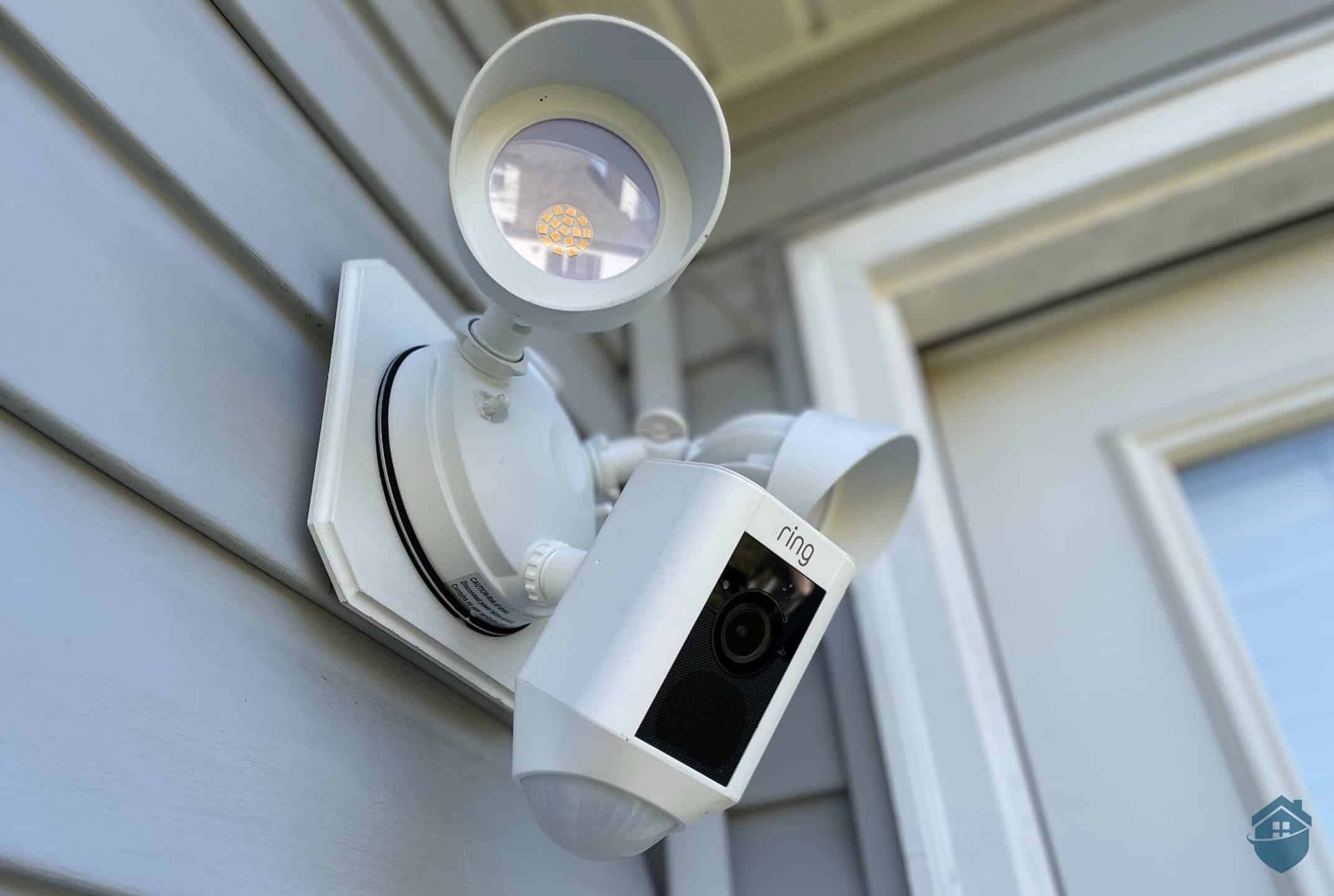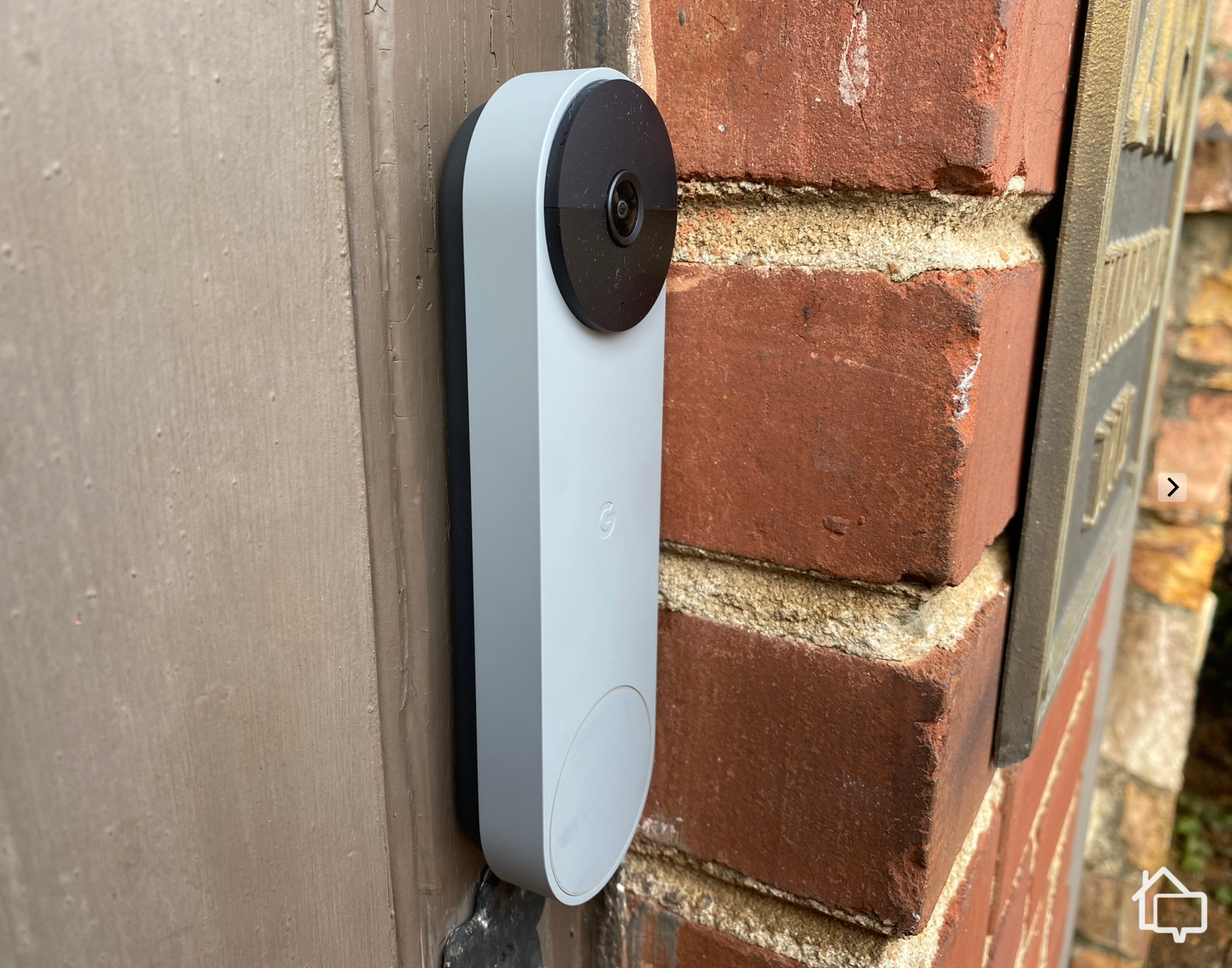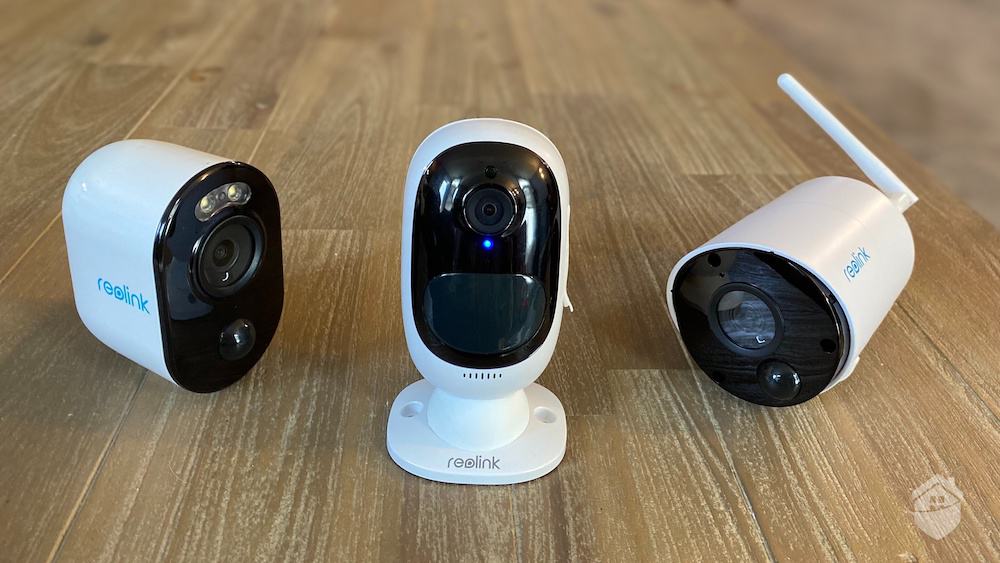
It’s a heart-sinking feeling. Someone’s in your home, and you didn’t let them inside. Do you confront them or run? If you’ve got it together, you’ve already dialed 911. What happens next will depend on luck and statistics, which we’ll get into below. But one thing is certain: The last thing you’ll be doing while you’re dealing with a home invasion is asking yourself: Is this a burglary or a robbery?
You may ask Google what to do when your lasagna catches fire in your oven, or your 10-year-old’s nose won’t stop bleeding. But when you can hear a lowlife rifling through your dresser drawers from the living room, I’m pretty sure the only thing you’ll be asking Google for is a shotgun.
That said, these two crimes aren’t the same thing and knowing the differences between them can help you secure your home better. With that in mind, let’s take a closer look at burglaries and robberies: what they are, how they’re different, and the steps you can take to protect your home and family from both.
The Key Difference
In short, if someone is threatening you, it’s a robbery. If someone has come into your home with the intent to steal, it’s a burglary. That’s the key difference between robbery and burglary. But it’s a little more complicated than that. Don’t worry, we’ll cover everything about burglary and robbery in this guide.
How the Law Defines Burglary
There were 847,522 burglaries in the U.S. in 2022, per the FBI’s Crime Data Explorer.1 That may sound like a lot — and it isn’t an insignificant number — but it’s actually down from 1,011,800 in 2019. Only half of those burglaries (423,983) involved residences.
Burglaries have actually been dropping steadily since 2012, by the way. But please don’t take that to mean that burglars have had a change of heart and are now working respectable day jobs. They haven’t and aren’t. Quality security systems, which are cheap, effective, and pervasive, have simply given plenty of the smarter ones second thoughts.
But going back to that statistic — what does it mean when the FBI says it logged 850,000 burglaries in 2022? In the eyes of the law, it means police caught nearly a million thieves who had entered a property illegally with the intent to commit a crime. If we unpack that a bit, we get the three key elements of a burglary: property, lack of permission, and intent.
Bookmark that last element. It’s important because it throws a pretty wide net around burglary. It means that a burglar doesn’t even have to steal anything. They only need to be on or inside property where they don’t belong, contemplating a crime.
Burglary in 2022: A Breakdown of the Key Statistics
| Burglaries in 2022 | Amounts |
|---|---|
| Residential | 423,983 |
| Daytime | 239,137 |
| Nighttime | 184,846 |
| Total cash stolen* | $53,581,599,430 |
| Total jewelry stolen | $9,390,392,444 |
| Total electronics stolen | $6,335,119,005 |
| Total recovered | $6,105,861,095 |
*These are the total amounts stolen by burglars in 2022, not just amounts taken in residential burglaries, per the FBI’s Crime Data Explorer.
FYI: When a criminal breaks into your car, it isn’t a burglary (unlawful entry). It’s larceny (unlawful removal of property).
Types of Burglars
Like pretty much anything, burglars come in different shapes and sizes. Not all of them are pros, as we’ve seen from countless Nest home security videos on YouTube, but they’re not all bunglers either. In broad brush strokes, here are the three basic types of thieves to look out for.
The Dice Roller
The Dice Roller is like a hungry 9-year-old in the Target candy aisle. He walks by a house, sees a door open, and makes a dash for whatever he can find: electronics, cash, your phone.
If the Dice Roller gets caught in the act by your Ring security camera — as they often do — it’s still a first-degree felony, even if the crime wasn’t premeditated. That’s enough to get them one to 10 inside the Big House in most states.

Ring Floodlight
Remember: The Dice Roller may not have a MENSA membership, but you don’t want to run into him, because he’s probably hard-up and looking to sell your things for money. To keep him off your property, take away his incentive by removing valuables from eyesight and maintaining entryway security, i.e., no flimsy doors or windows, especially around back. For even better protection, ramp up your home security with glass break alarms and motion sensors.
The Prowler
The Prowler doesn’t commit burglaries of passion like the Dice Roller, and he’s not necessarily looking for drug money. Burglary is his job or his side gig. So he’s not going to barge through your door before he does a little recon. He wants to know when you leave for work, for example, and if you’ve got a dog or a security system. That means if he’s caught, the Prowler’s definitely looking at a hefty first-degree burglary rap because he’s not only invaded your property, but he’s also planned the crime ahead of time.
Remember: While prowlers don’t like seeing blue ADT alarm signs, a good Wi-Fi alarm system will give plenty of them second thoughts because there are no wires to cut outside.
Pro Tip: If you’re new to wireless home security, we recommend SimpliSafe security systems. They’re pretty cheap and totally DIY. Here’s my experience testing SimpliSafe’s complete home security system.
The Professor
If you saw this guy in a heist film, his name would be Doc. The Professor not only knows when you’re not at home and what kind of security you’ve got inside. He also knows where you keep your cash and may even be able to disable your alarm. In other words, if the Professor is stalking your home, you could be in trouble. However, there’s a silver lining here.
Remember: Unless you happen to inherit the Wittelsbach-Graff Diamond — and are storing it in your TV remote drawer — the Professor isn’t going to be dropping by. He’s busy burgling more lucrative targets like banks, businesses, and casinos.
However, if you do want to stop a seasoned pro, a decent home security system with 24/7 professional monitoring is going to make this risk-averse brainiac’s job significantly riskier.
States With the Most Property Crime (per 100,000 Inhabitants)2
| State | Number of burglaries |
|---|---|
| Colorado | 3,135 |
| Washington | 3,134 |
| Oregon | 2,818 |
| Louisiana | 2,673 |
| Arkansas | 2,647 |
States With the Least Property Crime (per 100,000 Inhabitants)
| State | Number of burglaries |
|---|---|
| Alaska | 1,151 |
| New Hampshire | 1,063 |
| Idaho | 1,045 |
| Massachusetts | 1,044 |
| New York | 710 |
>> Check out: 2025 Crime Rates in U.S. Cities
FYI: The last time the FBI published statistics in 2019, the average burglary haul was $2,661, which isn’t peanuts by a long shot.3
Robbery Defined
Burglary can be scary, but robbery is almost always horrific. That’s because the key element of a robbery — which can occur anywhere, by the way, not just in your house — is force. A robber rips your possessions out of your hands, often using a weapon.
Bank and convenience store holdups are your classic robbery scenarios. But mugging, home invasion, and bank jugging, where a criminal forces you to hand over money at an ATM, would also fit the bill.
Because of the nature of the crime — intimidation, violence, weapons — sentences for robbery can get steep. In Texas, for instance, aggravated, first-degree robbery can land a perp in jail for 99 years. But that’s extreme. According to the latest stats from the FBI, the average sentence for federal robbery with a weapon was about 13 years.4
States With the Most Violent Crime (per 100,000 Inhabitants)
| State | Number of violent crimes |
|---|---|
| Arkansas | 709 |
| Tennessee | 675 |
| Louisiana | 661 |
| Alabama | 596 |
| Alaska | 551 |
Note that Alaska is a state with low property crime but high violent crime. You can find the same inverted relationship in “safe” cities that have low violent crime but high property crime. Bottom line? Just because you’re living in a relatively safe place doesn’t mean you don’t have burglars.
States With the Least Violent Crime (per 100,000 Inhabitants)
| State | Number of violent crimes |
|---|---|
| Vermont | 186 |
| Connecticut | 162 |
| New Hampshire | 137 |
| Maine | 113 |
| New York | 102 |
Did You Know? Out of the 43 states where enough reliable data was available in 2021 (see tables above), New York is the state with the lowest rate of both property and violent crime.
Main Differences Between Burglary and Robbery
Time for a recap. If someone is threatening you, you’re being robbed. If someone has stepped into your home with the intent to steal, you’re being burgled. That’s the main difference between robbery and burglary. But there are a few fine points to keep in mind, too. Here are the most important four.
Burglary Is About Property, Robbery Is About Violence
If you’ve ever wondered why loitering is a crime, it’s because a loiterer who steps onto private property without an invitation becomes a burglar. Property is key. Robbery, on the other hand, can happen anywhere.
In fact, an FBI report from 2015 found that 42 percent of the 284,722 robberies reported that year happened on public roads, and only two percent happened in banks.5 Seventeen percent, or 14,136, were home invasions, however, which is a sobering figure.
Burglary Can Happen When You’re Not There, Robberies Need a Victim Present
A burglar can hit your home when you’re inside, but it’ll probably be by accident. We don’t call them sneak thieves for nothing. A robber who attacks your home is there to terrorize you. He’s looking for a victim.
Burglars Don’t Have to Steal Anything, Robbers Do
This might be tough to wrap your head around, but police can charge someone with burglary even if they haven’t taken anything. Here’s an example: Imagine you come home from the gym at two o’clock in the afternoon and find a stranger padding through your apartment with an empty duffle bag. They haven’t taken anything yet, but they can still be charged with burglary because they’ve entered your home illegally with the intent to commit a crime.
The situation is a little different for robbery. Say a criminal botches a mugging. They’re definitely on the hook for assault, but they’re not going to be charged with robbery because they haven’t taken anything. Not very intuitive, but that’s the way it works in the eyes of the law.
Burglary May Not Be a Felony, Robbery Is Always a Felony
There’s a chance that a bumbling, spur-of-the-moment burglar — i.e., most of the ones who get caught on our Ring video doorbells — will walk away with a misdemeanor if he doesn’t manage to get inside a home. Illegal entry is the bedrock of burglary, after all. Robbery, on the other hand, is always a felony because it involves threats and physical violence.
Did You Know? Predictably, July and August are notoriously bad months for burglaries. Here are five tips we recommend for out-sneaking thieves while you’re away at the beach.
SafeHome’s Latest Livestream
Our home security experts are now doing livestreams with industry experts like retired SWAT Commander Gene Petrino. Learn how to protect your home and family from thieves, burglars, and home invaders.
What You Can Do to Protect Your Home Against Burglars and Home Invasions: Final Thoughts
Going by the numbers, burglars are choosier in 2025 than they were in 2019. That is, they’re choosing to hit homes without the kind of security that could land them in prison. I’m not talking about anything fancy. I mean a camera by the door or on the porch, an alarm, and a couple of motion sensors. That’s all it takes to keep most prowlers out.
Which explains why you see so many videos of intruders prowling about homes that have placed a single camera in the bedroom or on the kitchen counter. Yes, those cameras catch burglars red-handed. And, yes, the footage might help police ID the thief. But if the owners had slapped a motion sensor on the backdoor, the creeps wouldn’t have gotten inside to begin with. This isn’t rocket science, folks, I promise.
Here’s one last number to sign off with. Up top I mentioned that the average burglar’s haul was $2,661 in 2019. A basic DIY home security system will run you about $250-$300. By my calculation, that’s one-tenth the price of what you could lose in a burglary — or around 10 years’ worth of peace of mind.

The Nest Video Doorbell’s profile
Not sure how to get started choosing your home security system? Here are a few lists that will help:
- For front door security, here are our favorite smart locks.
- For security cameras, these are the best models we tested this year without subscriptions.
- For alarms, we like these top systems with professional installations. If you’d prefer to save some cash and do it yourself, scroll up a paragraph for our DIY home security recommendations.
FYI: SafeHome is now livestreaming! Got questions about home security? Email us at info@safehome.org, and we’ll answer your questions live on our next stream—personalized advice, straight from the experts. Find us on YouTube @safehome_org. Don’t miss out!
Burglary vs. Robbery Frequently Asked Questions
- Is burglary the same thing as robbery?
No, it’s not. Burglary is when someone enters a property illegally with the intent to commit a crime, usually theft. Robbery is when someone threatens or attacks you in order to take something from you.
- Can someone rob me in my home, or is that a home invasion?
First, yes, if you’re at home when a burglar breaks into your house and they force you to hand over your wallet or purse, that’s robbery. But it would also be considered a home invasion.
- How many burglaries are there every year in the U.S.?
In 2022, there were a little under 850,000 burglaries.
- Are most burglars armed?
No. Past research indicates that less than half (4 in 10) burglars carry weapons.6
- What can I do to protect myself against home invasions?
First and foremost, invest in basic home security equipment. A few entryway sensors connected to an alarm is usually all it takes to send an intruder packing.





